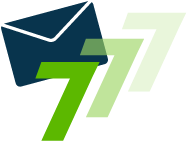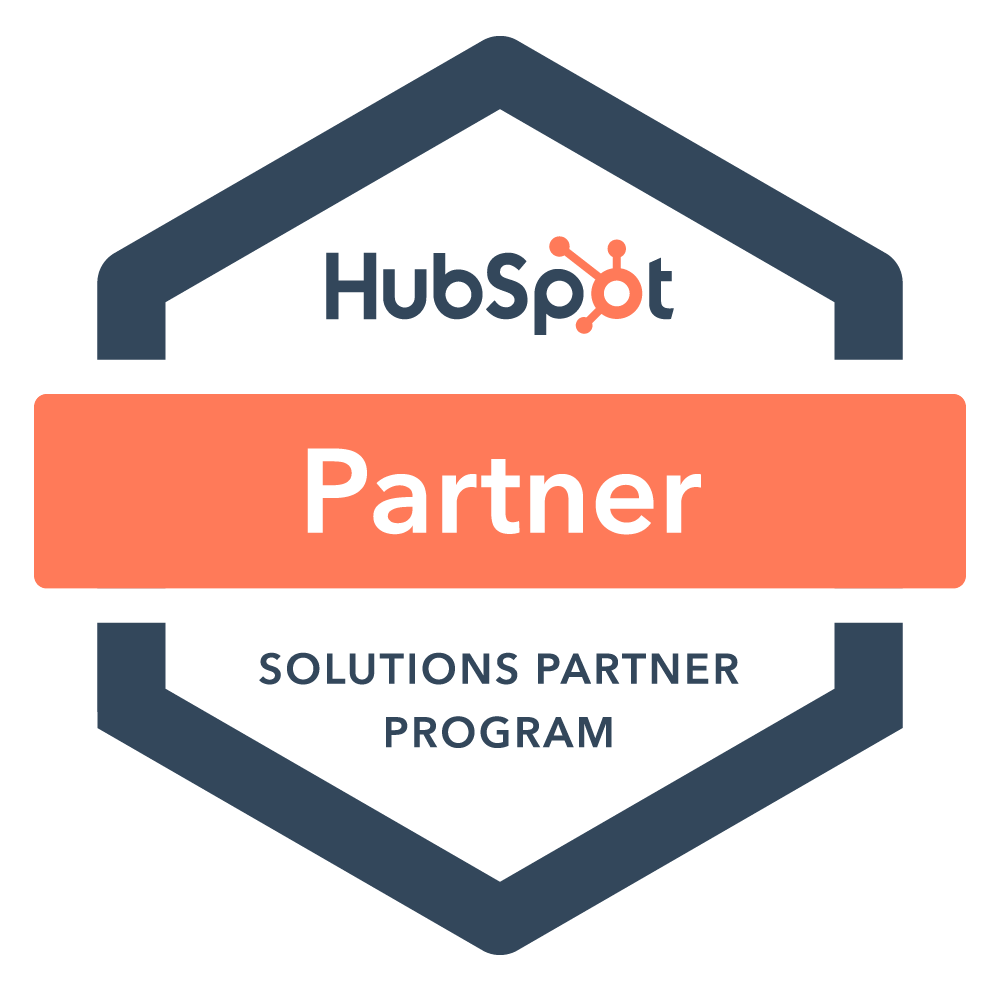Unlike traditional marketing, SaaS marketing is digital-first. That takes skills and strategies unique to the SaaS space. Here's the SaaS start-up's intro built to get your marketing approach right the first time.
Over the course of 30+ interviews with SaaS start-ups at the beginning of the theorytwenty7 journey, it became clear that founders had a lot of weight on their shoulders. Knowing where to start with marketing shouldn't add to this.
Today, we're sharing an introduction I created for those leaders to help shape their approach to marketing around a base level of knowledge. If you're the same, you're in the right place!
What Is SaaS Marketing?
SaaS marketing is about creating awareness, generating interest, and driving conversions for products and services.
You want to attract and retain customers, boost revenue, and build a loyal user base beyond the founder-led sales you’ve been running this far.
To be successful, you need to effectively communicate the value, benefits, and pains your SaaS helps users with.
Because SaaS companies are often subscription-based, marketing should never stop. SaaS marketing is a tap that is always on, working towards these goals:
1. Customer Acquisition
SaaS marketers wake up with one goal: attract a steady stream of new users. Marketing strategies and plans are built to ensure you reach prospects, introduce them to the product, and get them into the product.
Success is dollars and cents - Monthly Recurring Revenue (MRR) and Annual Recurring Revenue (ARR).
2. Customer Retention
Retaining existing customers is just as important. After all, it costs more to create a new customer than keep an existing one.
SaaS businesses want to keep their users engaged and satisfied, reducing churn rates (the rate at which customers cancel their subscriptions).
Success is Customer Lifetime Value (LTV), churn rate, and Average Revenue Per User (ARPU).
3. Revenue Growth
Revenue allows you to grow. SaaS marketers are obsessed with this.
This is achieved through customer acquisition and upselling additional features or services to existing customers.
4. Value Communication
Talk to any Advisor or Analyst at Gartner, and they’ll bring everything back to your ability to get the value of your product across to your buyers - that’s what we call product marketing.
This includes showcasing how the software solves specific problems, enhances productivity, and streamlines processes for businesses and individuals.
Success is measured in Sales Qualified Leads (SQLs), their monthly consistency, prospect-to-customer conversion rate, and average deal size.
What's Involved In SaaS Marketing?
SaaS marketers tend to come from a growth mindset background. They’ll constantly test and refine their work – something anyone who’s read The Lean Startup will appreciate.
That’s great, but it’s unsustainable without a solid product marketing foundation that includes:
Buyer Personas
When you’re chasing product market fit, you have hypotheses on who wants your product, and you speak to them. That evolves into creating buyer personas to guide your go-to-market (GTM).
Marketers take to their market (hence the name) and speak to ideal buyers to walk away with three basic forms of information:
- Where do you go for information,
- How do you consume that information, and
- What are your job's challenges 9-5, Monday through Friday (weekends too)?
Product Positioning And Messaging
Effective product positioning means defining what makes your SaaS solution stand out. It’s another staple of what good SaaS product marketing looks like.
It's a compelling value proposition – the essence of why your SaaS is a must-have. From here you build messaging that is used in every blog, product sheet, video, and beyond.
Tying back to your personas and constantly talking with them, you get your proposition by keeping your finger on their pulse.
Check in with them regularly and pay attention to how they talk, what they love about the product, and what they’d change.
If you can crack this, you’ll improve the product, how you position it and improve the way you talk about it to prospects.
Content Marketing
Content is at the heart of SaaS marketing. That’s blogs, podcasts, webinars, and your site.
Show your knowledge, let prospects access it for free, and give them the option to resolve their pains themselves.
Those who subscribe to your product do so because you made the effort to show them how to do something themselves, but they know you’re the best to do it.
The content you build will be shaped by what your personas tell you they care about and need help with. Your content will guide buyers throughout every touch point of their journey.
The result is value for the prospect and you’ve showcased your expertise.
Customer Acquisition
A big part of SaaS marketing is dedicated to customer acquisition.
This involves the process of attracting and converting potential users into paying customers. Several strategies are employed to achieve this, including:
Demand Generation
This often gets overlooked, but it’s important to continue and expand on what you’ve been doing to generate demand. Cold emails, cold calling, cold LinkedIn and Reddit, and continuing to attend virtual and face-to-face networking.
For example, a start-up offers an identification verification system.
They know that their initial demand generation has been through attending events for Facilities Managers.
They introduce marketing programs that combine attendance with the event with LinkedIn outreach to this audience, coupling up with emails, and sharing thought leadership content via advertising on LinkedIn and posting organically into Reddit.
This network effect multiplies what was one way to create demand and increase the reach, giving back precious time.
Search Engine Optimization (SEO)
Optimizing your website and content to rank well in search engines makes it easy for prospects to find you.
For example, a start-up offers a project management tool.
Through effective SEO, this company ensures that when users search for terms like "best project management software" or "project management solutions," their website appears at the top of search results.
This visibility drives organic traffic and increases the likelihood of attracting potential customers.
Paid Ads
Running targeted advertising campaigns on platforms like Google Ads or social media to reach potential customers.
For example, a SaaS start-up specializing in email marketing software runs a targeted PPC campaign on Google Ads.
When users search for "email marketing tools" or related keywords, the start-up's ad appears at the top of the search results.
Clicking on the ad takes users directly to the product's landing page, where they can explore features and sign up for the service.
Content Marketing
Producing high-quality content that addresses the pain points and needs of the target audience, attracting organic traffic and driving conversions.
For example, a SaaS company in e-commerce regularly publishes blog posts and resources that address common challenges online retailers face.
By providing solutions and insights, the company establishes itself as a trusted resource in the e-commerce community.
This content not only attracts organic traffic but also positions the company as an industry expert.
Lead Generation
Creating methods to capture potential customer information, such as email addresses, and nurturing these leads toward becoming paying customers.
For example, a SaaS offers customer relationship management (CRM) software and creates a free eBook titled "The Ultimate Guide to CRM Implementation" on its website.
In exchange for the eBook, visitors provide their email addresses.
The company then nurtures these leads through targeted email campaigns, sharing valuable CRM insights and encouraging them to try the software.
Trial Offers
Offering free trials or freemium versions of the software to allow potential customers to experience its value before committing to a subscription.
For example, a start-up that provides graphic design software offers a 14-day free trial of its premium product.
This allows potential users to explore the software's features, create designs, and experience its value.
After the trial period, users can choose to subscribe to the premium version.
Partners And Networks
Establishing partner and affiliate programs, using digital marketplaces and other platforms to support growth through the channel.
For example, a cyber security SaaS start-up collaborates with influencers and IT consultancies.
In practice, customers engaging the IT consultancies receive access to the tool, enhancing services. Influencers promote the tool through affiliate links, earning commissions.
This dual approach expands visibility and drives growth, benefiting partners and the SaaS start-up.
Sales Enablement
Supporting sales reps to reduce friction in the sales cycle with tools and automation that allow them to spend more time talking and converting the right type of leads.
For example, a cloud utilization software provider receives thirty SQLs a week but finds that only 25% of these people attend a demo.
The marketing team introduced a series of emails and sales sequences in HubSpot to encourage the SQLs to book a calendar slot, share information about the product and cut out chasing admin from the sales rep.
Customer Delight
Turning customers into champions through content, customer advisory boards, and opportunities to showcase their stories and skills.
For example, an accounting software provider struggles with a 60% churn rate.
To fight this, the marketing and customer success team created a CSAT process to capture customer feedback, a customer newsletter, and a customer advisory board that shines a spotlight on the highest-rated CSAT surveyors.
That marketing effort gives the customers some added TLC and leads to finding product champions that you can promote and show off to like-minded prospects.
Retaining Customers Is Your Best Offense
Retaining your customers is as crucial as acquiring new ones. If you can keep customers happy, using the product, and renewing, that’s a solid foundation to build from. SaaS marketing contributes to customer retention in a number of ways:
Customer Advisory Boards
The Customer Advisory Board is a way to involve a select group of customers in giving feedback on your product (existing and in development).
Through regular face-to-face and virtual meetings, you give customers a platform to be celebrated.
That platform often leads to a genuine, natural promotion of your SaaS through events, G2, and case studies.
G2 And Reviews
If your customers love your product, your support, and all that you stand for, they’ll go out of their way to tell everyone who will listen.
That can be best shown through your reviews on platforms like G2, which show off what users think of your product.

Great SaaS marketing knows when to ask for customer reviews and integrate them into your GTM.
Content Development
Content will always be at the core of SaaS marketing.
For your customer retention, that’s important because it allows you to involve customers in case studies and testimonials.
But there’s more because you can invite customers on podcasts, co-promote each other at events, and much more. It all serves to build trust and a lasting relationship.
Customer Journey
The customer journey is a long, winding road. It starts the moment someone hits your site and goes beyond subscribing.
With more emphasis being placed on the product experience, it’s important to unify product, marketing, sales, and customer success to use every touch point with your SaaS as a genuine smile-raising moment.
Here's an example of a lead's journey:

That’s emails at the right time to celebrate milestones, chat features to be there when users need you, onboarding, and beyond.
What Does SaaS Success Look Like?
Here are some of the most successful SaaS marketing plays:
HubSpot's Inbound Marketing
HubSpot, the leading inbound marketing and sales platform, pioneered the inbound marketing methodology.
By providing valuable, educational content and nurturing leads through the buyer's journey, HubSpot achieved remarkable growth.

This strategy helped them acquire and retain a vast customer base. It's even seen them expand into INBOUND, their annual conference for gathering customers, prospects, and HubSpot aficionados.
I am one of those customers. Their plan has worked six times in my career and that is why I am in my position. They started me on inbound, SEO, content, and paid ads.
Slack's Viral Growth
Slack, a team collaboration platform, adopted a viral marketing approach.
They provided a free version of their software with easy team collaboration features.
 Users were encouraged to invite others, and this virality led to rapid user acquisition.
Users were encouraged to invite others, and this virality led to rapid user acquisition.
Their marketing strategy leveraged word-of-mouth and network effects.
What Stands Between You And Getting Marketing Right?
While SaaS marketing offers so much growth potential, it has challenges. You need to know what you're up against and what's going to affect a marketer’s ability to promote your SaaS:
1. Competitive Landscape
SaaS is hyper-competitive. New entrants constantly emerge, and established players continuously innovate. SaaS marketers must navigate this by differentiating their offerings, identifying unique value propositions, and staying ahead of competitors.
2. Evolving Technology
Technology in the SaaS world evolves rapidly. Marketing strategies and tools must adapt to these changes. To maintain a competitive edge, SaaS companies must remain agile, incorporating new technologies, such as AI-driven personalization and data analytics.
3. Customer Education
SaaS products can be complex, requiring customers to invest time in learning and adopting them. Marketing strategies must include effective customer education providing resources and support to guide users through the onboarding process.
4. Customer Churn
Churn, or the rate customers cancel subscriptions, is a critical concern. SaaS marketers must focus on strategies to reduce churn, such as providing exceptional customer support and consistently delivering value.
5. Scalability
SaaS companies often aim for rapid scalability. Marketing strategies should be flexible and scalable to accommodate growth without sacrificing quality.
6. Data Privacy and Security
Data breaches and increasing privacy concerns are increasing, so SaaS companies must prioritize data security.
Customers entrust sensitive information to SaaS platforms, making it imperative for marketing teams to communicate strong data security measures.
7. Pricing Strategy
Pricing can be a complex challenge for SaaS providers. Finding the right balance between affordability and profitability is critical. SaaS marketers must work with finance and customers to create pricing models that align with customer value while delivering sustainable revenue.
8. User Adoption
Getting customers to use the software effectively is a common challenge. Marketing strategies need to extend beyond acquisition and focus on user onboarding, training, and ongoing support to ensure customers maximize the value of the SaaS product.
9. Regulatory Compliance
SaaS companies may operate in different regions with varying regulations. Compliance with data protection laws, such as GDPR or CCPA, is essential. Marketing efforts should address these compliance requirements and communicate a commitment to data protection.
10. Market Saturation
In some SaaS niches, market saturation can be a concern. Finding innovative ways to differentiate and offer unique value is essential. SaaS marketers need to assess the competitive landscape and adapt their strategies accordingly continually.
Go Start Your SaaS Marketing
Getting started with SaaS marketing takes two things - and it starts with a willingness to learn. From this, and these guides on offer at theorytwenty7 marketing, you’ll have the processes and support you need to succeed.
The second thing is time. Marketing is not a tap that can - or should - be turned on and off. You need to commit time, energy, and countless hours to getting it right.
Stay tuned for more advice in our SaaS marketing for leader’s series of guides. And if you need help, you can talk to me anytime, here.

James Milsom
When I'm not spending time quoting What We Do In The Shadows, The Office, or Parks and Rec, I'm watching the Georgia Bulldogs (Go Dawgs!), walking our dog Crosby with my wife, McKenzie, or geeking out on tech. I find time to eat, sleep, and work out too (honest!)







